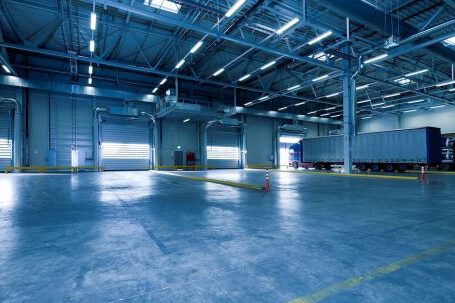The construction industry has seen some major changes over the past few decades. Many of these changes have come about as a result of the introduction of new technology and tools. One of the most significant changes has been the introduction of cranes into the construction process. Cranes have revolutionized the industry, allowing for faster and more efficient construction projects.
What Are Cranes?
Cranes are large, motorized machines that are used to lift and move heavy objects in the construction industry. They are made up of a variety of components, including a boom, a jib, and a counterweight. Cranes are usually mounted on a truck chassis or a special-purpose vehicle, allowing them to be moved from one construction site to another.
How Cranes Revolutionized the Construction Industry
Cranes have revolutionized the construction industry in a number of ways. First, they have greatly increased the speed and efficiency of construction projects. Cranes can lift and move large and heavy objects that would otherwise be difficult or impossible to move manually. This has allowed for faster construction times, as well as larger and more complex projects.
Cranes have also made construction projects safer. Previously, workers had to manually lift and move heavy objects, resulting in a higher risk of injury. Cranes, on the other hand, can lift and move objects with much greater precision and accuracy. This reduces the risk of injury, as well as the risk of property damage.
Finally, cranes have made construction projects more cost-effective. Cranes can lift and move objects quickly and safely, reducing the amount of time and labour required for a project. This in turn reduces the overall cost of the construction project, allowing for more projects to be completed within a budget.
The Different Types of Cranes
There are a number of different types of cranes that are used in the construction industry. These include:
- Tower cranes: These are stationary cranes that are used for lifting and moving materials in the construction of tall buildings. They are usually mounted on the ground or on the roof of the building.
- Mobile cranes: These are cranes that are mounted on a truck or other special-purpose vehicle. They are used for lifting and moving materials on construction sites.
- Telescopic cranes: These are cranes that have a telescopic boom that can be adjusted to reach different heights. They are used for lifting and moving heavy objects in areas with limited space.
- Floating cranes: These are cranes that are mounted on barges or other floating vessels. They are used for lifting and moving materials in areas with limited land access.
The Future of Cranes in the Construction Industry
Cranes are likely to continue to play an important role in the construction industry in the future. As new technologies continue to emerge, cranes are likely to become even more advanced and efficient. This will allow for larger and more complex construction projects to be completed in shorter periods of time.
Cranes are also likely to become more automated in the future. This will reduce the amount of labour required for construction projects, allowing for even greater cost savings. Additionally, automated cranes are likely to be safer, as they will be able to lift and move objects with greater accuracy and precision.
Conclusion
Cranes have revolutionized the construction industry in a number of ways. They have increased the speed and efficiency of construction projects, while also making them safer and more cost-effective. There are a number of different types of cranes, each of which has its own specific uses. In the future, cranes are likely to become even more advanced and automated, allowing for larger and more complex construction projects to be completed in shorter amounts of time.






